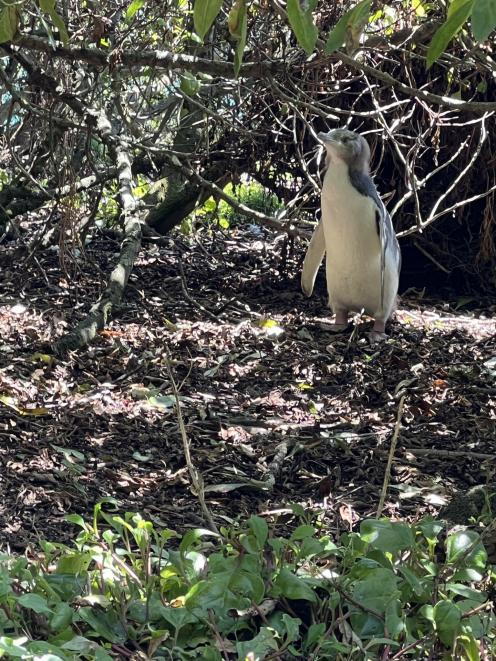
Last month the Department of Conservation and Te Runanga o Ngai Tahu announced that scientists predicted the hoiho could become locally extinct on the mainland within two decades.
Penguin Rescue manager Rosalie Goldsworthy said the threat of extinction was "very real" and support for their plight must increase.
"It's a choice the New Zealand people are making to let go of this iconic species, because by not resourcing the work that's the choice they're making."
Last week Penguin Rescue members were on a mission to rescue stranded penguins further south of the sanctuary near Palmerston, continuing their push to support the hoiho’s survival rate.
Declining mainland hoiho numbers point to multiple threats including disease, introduced predators, human disturbance, a significant shift in adult diet, fisheries bycatch, and marine predation.
Seasonal nest counts across coastal Otago, Southland, and Rakiura in the last two years,show numbers are substantially down compared to previous years, with an ongoing decline of 80% since 2008 and 2009.
The higher concern is there are less than 100 yellow-eyed penguin chicks on Stewart Island and mainland New Zealand and, of these, there is no guarantee of their long-term survival.
Over a third of the surviving chicks in New Zealand were based in the Moeraki area, with 30 chicks, 20 in the wild and 10 in care, along with about 80 adult hoiho at the sanctuary, Ms Goldsworthy said.
They continued the "push" to draw attention to the plight of the yellow-eyed penguin population along the North Otago coast, working together with the Waitaki District Council and other conservation and community groups.
Council biodiversity adviser Max Crowe said, along with local groups such as the North Otago Tramping and Mountaineering Club, Puketapu Community Trust and the Herbert Heritage Group, a meeting would be held next month in Hampden to discuss strategies to support the critically endangered species.
Predator control, monitoring nests, disease and injury treatment and planting of native vegetation to restore hoiho habitat were all on the agenda, along with a Ministry for Primary Industries and Department of Conservation-led surveillance and a planned response for highly pathogenic avian influenza, a major threat to the bird’s survival.
Mr Crowe said they would gather the "most up-to-date information" to provide to the Otago Regional Council.
As long-lived seabirds, hoiho have a low reproductive rate and low juvenile survival. Of the chicks that will shortly fledge, it is expected that less than 20% of those would survive to adulthood.
Ms Goldsworthy said despite a "terrible season" at Moeraki, with half of their chicks dying early in the season, things had improved.
"The penguins are not doing as badly as they are everywhere else. We lost 10% of our birds, not the 20% in the last season that they lost in other places.
"In the last month or so, feeding conditions have been good for the penguins because we haven't had the predicted marine heatwave yet. The chicks in the field are doing just fine," she said.
Many factors helped to increase the hoiho’s chance of survival at the sanctuary including "intensive" on-site treatment, allowing quick response times and the hoiho in care able to hear the wild hoiho calling, which was "less stressful" for the birds, Ms Goldsworthy said.
Mr Crowe welcomed members of the public to attend the meeting. It will be held at the Hampden Community Hall supper room on February 11 from 3pm to 6pm.












